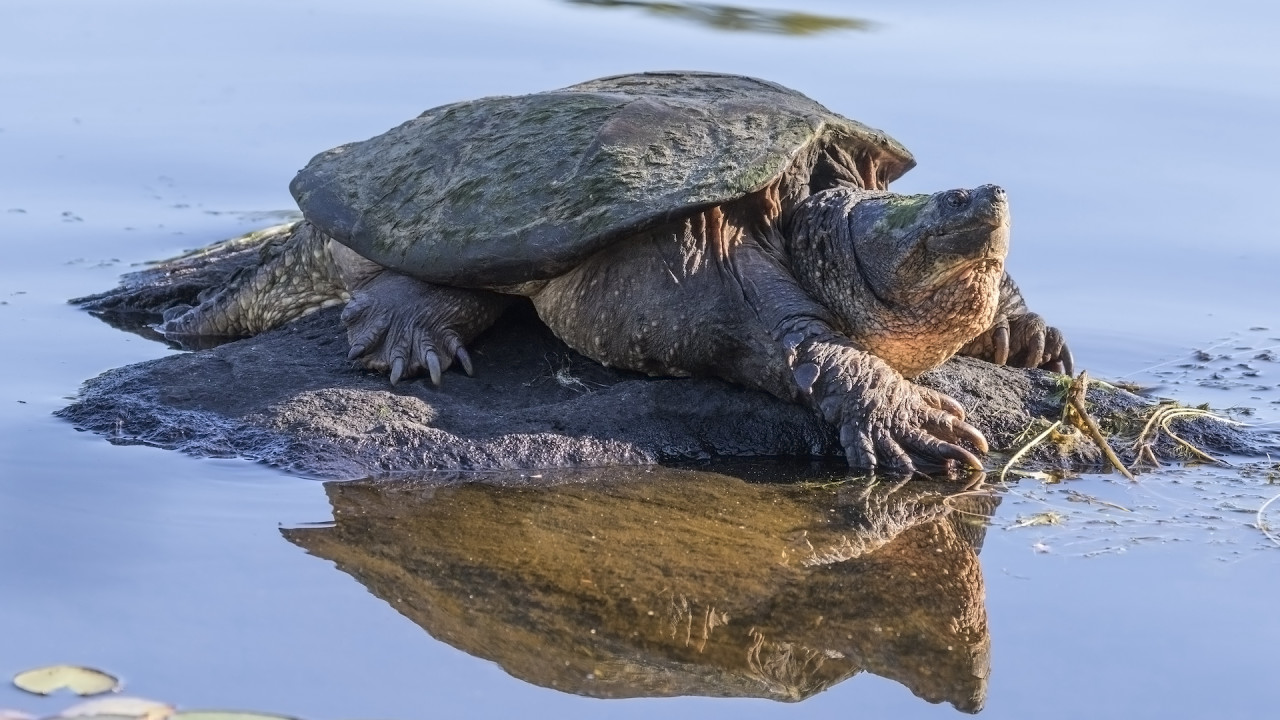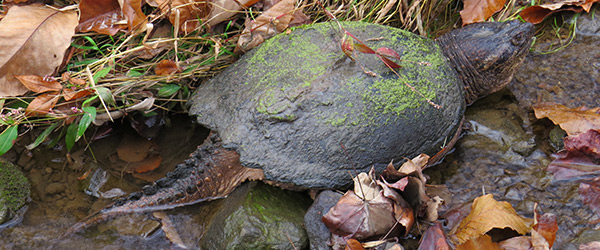To get snapping turtles out of a pond, use a long-handled net to safely capture and relocate them to a suitable habitat. This method ensures the turtles are removed without harm.
Dealing with snapping turtles in a pond can be a concern for many property owners. These large reptiles can disrupt the ecosystem and pose a threat to other wildlife, pets, and even humans. However, it’s important to handle their removal carefully and ethically to avoid harming the turtles or the environment.
We’ll explore effective and humane methods for safely removing snapping turtles from ponds. Whether you’re a homeowner, a property manager, or a wildlife enthusiast, understanding the best practices for managing snapping turtles in ponds is crucial for the well-being of the ecosystem.

Credit: www.themeateater.com
Importance Of Removing Snapping Turtles
Snapping turtles can disrupt the ecosystem of a pond, making it essential to remove them. They can harm other wildlife and pose a safety risk to humans.
Protecting Other Wildlife
Snapping turtles are known to prey on various species of fish, birds, and amphibians in ponds. By removing them, we protect the balance of the ecosystem and ensure the survival of other wildlife.
Ensuring Safety For Humans
Snapping turtles have powerful jaws that can cause serious injuries to humans, especially when they feel threatened. Removing them from ponds helps maintain a safe environment for people to enjoy outdoor activities without risks.
Identifying Snapping Turtles
Identifying snapping turtles is crucial when it comes to effectively managing their presence in a pond. Recognizing these creatures based on their physical characteristics and behavioral traits is the first step in understanding how to handle them appropriately.
Physical Characteristics
Snapping turtles are easily identifiable by their distinct physical features. They have a large, rough shell that ranges in color from black to brown, with a ridged, spiked appearance. Their head is quite large, with powerful jaws and a sharp, hooked beak. Additionally, snapping turtles have long, thick tails and webbed feet equipped for swimming.
Behavioral Traits
Understanding the behavioral traits of snapping turtles is essential for managing encounters with them. These turtles are known for their aggressive nature, often displaying defensive behavior when approached. They are also primarily aquatic, spending most of their time in the water, and are adept at camouflaging themselves by burying in mud or vegetation at the bottom of ponds.
Legal Considerations
Legal considerations play a crucial role when dealing with snapping turtles in ponds. It’s important to be aware of local regulations and the protected status of these species to ensure a safe and legal removal process.
Local Regulations
Before attempting to remove snapping turtles from a pond, it’s essential to familiarize yourself with the local regulations governing wildlife management. Contact the local wildlife authorities or conservation department to obtain information on any permits or guidelines that may be required for relocating or handling protected species.
Protected Species
Snapping turtles are often considered protected species in many regions due to their ecological significance. It’s vital to understand the legal implications of disturbing or relocating these turtles, as unauthorized actions can result in penalties or legal consequences. Always consult with wildlife experts or conservation organizations to ensure compliance with laws regarding protected species.

Credit: www.aaanimalcontrol.com
Non-lethal Removal Methods
Discover effective non-lethal methods for removing snapping turtles from your pond. Use safe traps and relocation techniques to ensure the turtles are safely relocated without harm. Keep your pond environment balanced and protected while managing wildlife encounters responsibly.
Snapping turtles can be a nuisance in your pond. These fierce creatures can cause harm to other aquatic life and even humans. Removing them from your pond is essential for the safety of all. There are different ways to get rid of snapping turtles, but in this article, we will focus on non-lethal methods. Here are some effective ways to remove snapping turtles from your pond without causing harm to them.Using Traps
One of the easiest ways to get rid of snapping turtles is by using traps. Traps are designed to capture turtles without harming them. There are different types of traps available in the market, but the most common one is the cage trap. These traps are easy to set up and use. You need to place the trap in the pond, and the turtles will get attracted to the bait you put inside the trap. Once the turtle enters the trap, it will trigger the door to close, trapping the turtle inside. You can then release the turtle in a safe location away from your pond.Hand-capture Techniques
Hand-capture techniques are another non-lethal way to remove snapping turtles from your pond. This method requires more effort and skill than using traps. The first step is to locate the turtle in your pond. Once you have located the turtle, you need to approach it slowly and carefully. You should wear gloves to protect your hands from the turtle’s sharp claws. Then, grab the turtle by its shell near the back legs and lift it out of the water. You can then relocate the turtle to a safer location away from your pond.Conclusion
Non-lethal methods of removing snapping turtles from your pond are effective and humane. Using traps or hand-capture techniques can help you get rid of these creatures without causing harm to them. However, it is important to note that snapping turtles are wild animals, and handling them can be dangerous. Therefore, it is recommended to seek professional help if you are not comfortable with removing the turtles yourself.Professional Removal Services
Snapping turtles are fascinating creatures, but they can be a nuisance in a pond if their population grows too large. If you’ve tried other methods of removal and they haven’t worked, it may be time to consider professional removal services. Here’s what you need to know:
When To Consider Professional Removal Services
If you’ve tried other methods of removal, such as trapping or relocating the turtles, and they haven’t been effective, it may be time to consider professional removal services. Additionally, if you have a large pond with a significant population of snapping turtles, it can be difficult and time-consuming to remove them on your own.
Choosing A Reputable Service
When choosing a professional removal service, it’s important to do your research and choose a reputable company. Look for a service that has experience with removing snapping turtles specifically and that uses humane methods of removal. Additionally, make sure the service is licensed and insured.
Here are some other factors to consider when choosing a removal service:
- Availability: Make sure the service is available to remove the turtles at a time that works for you.
- Pricing: Compare prices from different services to find one that fits your budget.
- Reviews: Check online reviews and ask for references to get an idea of the quality of service provided.
Ensuring Humane Removal
It’s important to make sure that the removal service you choose uses humane methods of removal. This means that the turtles are not harmed in the process of removal.
One common method of humane removal is to use baited traps. The turtles are lured into the trap with food and then safely removed from the pond. Another method is to use a net to capture the turtles and then safely relocate them to a new habitat.
Make sure to ask the removal service about their methods of removal to ensure that they are humane.
Creating Unwelcoming Environments
Creating Unwelcoming Environments for snapping turtles in your pond is an effective and humane way to encourage them to relocate. By modifying the habitat and installing deterrents, you can make your pond less appealing to these creatures, reducing the likelihood of future encounters. Here’s how to create an environment that encourages snapping turtles to seek alternative habitats.
Modifying Habitat
Modifying the habitat around your pond can discourage snapping turtles from staying in the area. Remove any overhanging vegetation, such as bushes or trees, that provide shade and shelter for the turtles. Additionally, consider installing a barrier, such as a fence or netting, around the perimeter of the pond to limit access for these creatures.
Installing Deterrents
Installing deterrents is another effective method to make your pond less inviting to snapping turtles. You can use visual deterrents like shiny objects or motion-activated devices to startle the turtles and discourage them from entering the pond. Physical barriers, such as mesh or wire covers, can also be employed to prevent access to nesting areas.
Educating The Community
When it comes to dealing with snapping turtles in ponds, educating the community is essential for promoting coexistence and ensuring the safety of both humans and wildlife. By raising awareness about the behavior and habitat of snapping turtles, communities can learn how to peacefully share their environment with these fascinating creatures.
Raising Awareness
One of the first steps in educating the community about snapping turtles is to raise awareness about their natural behavior and role in the ecosystem. This can be achieved through informational workshops, educational materials, and public awareness campaigns. By understanding the importance of snapping turtles in maintaining the ecological balance of ponds, community members can develop a greater appreciation for these reptiles.
Promoting Coexistence
Promoting coexistence involves teaching community members about the best practices for peacefully cohabiting with snapping turtles. This includes providing guidance on how to safely interact with snapping turtles, respecting their natural habitat, and implementing measures to prevent conflicts. By promoting coexistence, communities can foster a harmonious relationship with snapping turtles while minimizing potential risks to both humans and wildlife.
Monitoring And Preventing Future Incidents
Monitoring and Preventing Future Incidents:
Regular Checks
Inspect the pond perimeter frequently for any signs of snapping turtles.
Implementing Long-term Solutions
Construct a barrier around the pond to prevent snapping turtles from entering.

Credit: www.farmanddairy.com
Conclusion
To effectively remove snapping turtles from your pond, consider using exclusion barriers and traps. Remember to handle them carefully and release them far away from your property. By implementing these methods, you can maintain a harmonious balance between wildlife and your pond ecosystem.
Keep your pond safe and flourishing!






Leave a Reply